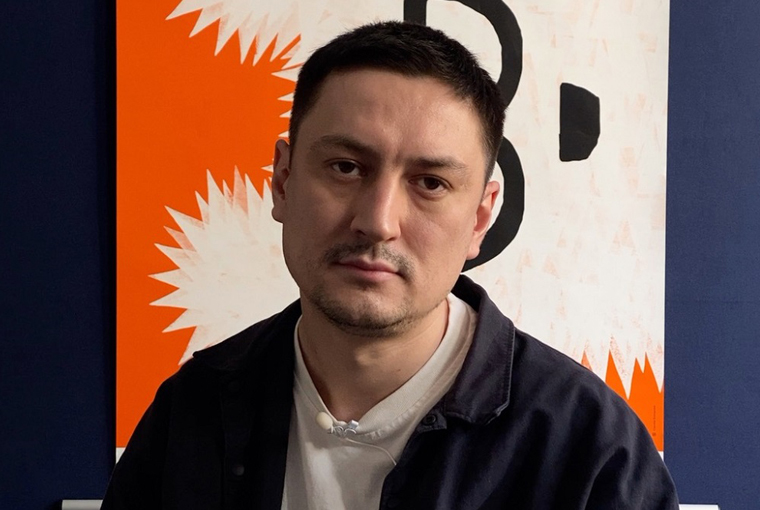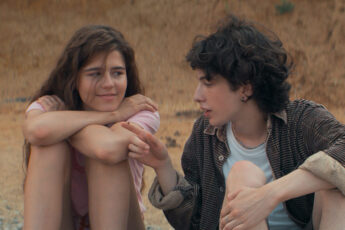
We met Michael Borodin at the 72nd Berlinale (February 10-20), where his debut feature “Convenience Store” – a story of contemporary slavery and motherhood that was inspired by true events – was screened in the event’s Panorama Section. Borodin discusses the idea behind his film, the working conditions of Uzbek migrants in Moscow, and the challenge of finding a hopeful ending for his film.
In your director’s statement, you mention that Convenience Store is based on your own personal experience of Moscow. Could you elaborate on that?
It’s more about a feeling than a concrete practical experience. When I arrived in Moscow, I found myself in this huge city and I felt confused. When I started to do some research in preparation for the film and spoke to people in situations like that, I got to understand their problems and why they could not leave. They had to give away their passports and there’s a whole mechanism that, once it starts working, does not allow them to leave this place.
The film presents two types of slavery: workers who are trapped inside the convenience store and those who do hard manual labor on cotton fields. The latter brings to mind the history of slavery in America as well as the economic reality that grew from that tradition. Could we thus extend the film’s original scope and see it as a study that helps us understand workers’ exploitation in both Russia and the (neoliberal) West?
We cannot make this comparison with the help of the film, but perhaps we can make it when we are discussing the situation or when we deliberate adopting new laws. You make this very exact comparison between picking cotton in Uzbekistan and the situation in America from 150 years ago. It is interesting to remember that, because of the American Civil War, North Americans stopped delivering cotton to Russia and so they started to grow cotton in Uzbekistan. Meanwhile, the methods used to pick cotton have not really changed a lot. People are threatened with being fired if they don’t go to the fields. And that is a widespread practice of exploitation, it is not only happening in Uzbekistan.
When Mukhabbat, the main character of your film, visits Uzbekistan, she describes Moscow as a labor heaven to her co-workers, mainly to convince them to follow her to Russia. How widespread is this dream of Russia being a labor heaven?
We can say that in Russia there is more work than in Uzbekistan. People feel forced to leave for Russia, India, Kazakhstan, China, Turkey, or South Korea. These are the main destinations where they can work, gather some money, and send it to their families.
At the end of the film, Mukhabbat chooses to become a part of the slavery operation run by Zhanna. Is the audience supposed to understand that she had no alternative, or should we be angry at her making that choice?
I think it was a very understandable choice. She wanted to be with her child. This is a very important part of the film, and it is based on real events – the whole film is partly inspired by these events. One of the most important things we wanted to make the audience aware of through our film is what you are asking about, to understand the reasons for this choice. I have no answer and I think there is no answer in real life. That is why we often try to discuss this point with the audience after the screenings.
Is the film’s plot based on the story of a specific person who went through similar events?
Yes, as I said previously, it’s partly based on real events. Different stories and destinies of different people were puzzled together to create a single main character.
Sometimes I felt a kind of distance between the audience and the main character, since we never get to see other parts of her life, beyond her being a mother or a migrant worker. Does this suggest an unbridgeable distance between the audience, an international Western audience in this case, and the condition of a female worker with no legal status?
We made this choice to maintain a distance and not get too close to the character in order to be able to disconnect afterwards. After all, it is a tough and brutal story. However, there are different aspects to the story. In the film, people see Mukhabbat in very different ways. There are the buyers in the store, the activists who want to help her, her friends at the field, her boss, and also the opportunity of having a romantic relationship. But we didn’t want to move the story too far. We kept it the way we did not because there aren’t any other aspects, but to preserve the coherence of the story. Having said that, I can relate to the desire to get closer to Mukhabbat and understand her better. But we couldn’t fit everything in the film, as there are already many aspects to it. Maybe we can focus on that in our next project.
The film includes some scenes that can be described as surreal, like the last scene of the film. Could we see this break with the realistic approach followed by the rest of the film as a final possibility to escape the universe of slavery in the convenience store?
In the film, the main characters have no escape, much like in the real-life convenience store. But I needed to find an exit, to give some hope. The first idea was to destroy this convenience store at the end of the film, to set it on fire or something like that. But then I realized this wouldn’t be true to the world. So, I kept searching for solutions and then I decided to use this surreal scene to lend some hope. An even more fantastic or surreal approach would have been unfair to the main characters of the film, as it would be to real life. Because this convenience store still exists and operates in Moscow. In the final scene it is still there, rising above Moscow – in a way, as does the store in real life.
Thank you for the interview.




Leave a Comment